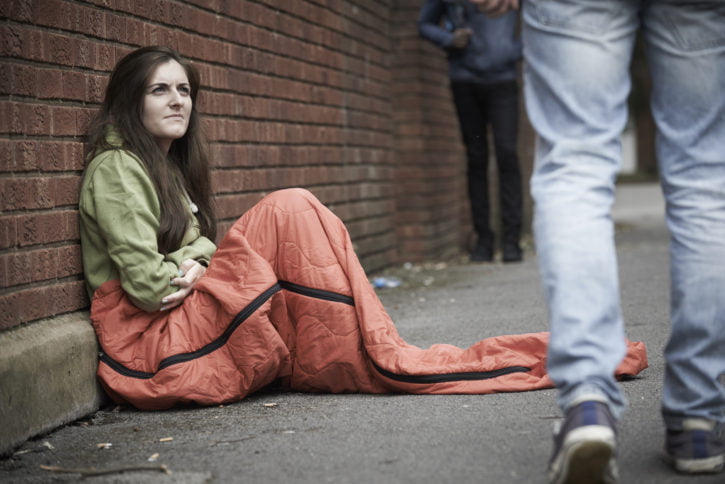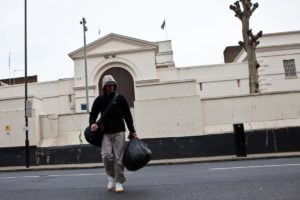Home truths: housing for women in the criminal justice system
The failure to solve a chronic shortage of suitable housing options for women who offend leads to more crime, more victims and more unnecessary and costly imprisonment. Safe, secure housing is crucial in breaking that cycle and the harm it causes to our communities, to the women involved and to their families.
That’s the conclusion of a new (22 September 2016) report from the Prison Reform Trust and Women in Prison entitled Home truths: housing for women in the criminal justice system
Background
Key facts from the report include:
- 6,700 women were released from prison in England and Wales in the year to March 2016
- 60% of women prisoners may not have homes to go to on release.
- In England and Wales, women are imprisoned on average 64 miles away from home and in 2010 more than 17,000 children were separated from their mothers by imprisonment.
- Of the 8, 818 women received into prison in England and Wales in 2015, 45% entered on remand, and most of these did not go on to receive a custodial sentence on conviction. Women are more likely than men to be on remand.
- Most women (80% in England and Wales) entering prison under an immediate custodial sentence are on sentences of less than 12 months, and 61% are in for 6 months or less (76% for women in Scotland).
- 19% of the women’s prison population are from Black, Asian and Minority Ethnic backgrounds, compared to 14% of the general women’s population. Black British women made up 10% of the women’s prison population compared to only 3% of all the overall women’s population.
- 31% of women prisoners spent time in care as children, compared with 24% of men.
- Lack of housing affects employment and employment outcomes for women following short prison sentences are three times worse than for men. Fewer than 1 in 10 women have a job to go to on release.

Findings
Lack of secure housing is obviously a key factor in making it difficult for men and women offenders to turn their lives around on release. However, women face a number of additional barriers:
- The report reveals a lack of clarity and consistency about responsibility for the housing of women offenders. It found limited suitable accommodation options for women, especially those with additional vulnerabilities such as substance misuse, mental health problems, and domestic abuse.
- Research suggests that women are more likely than men to lose their accommodation whilst in custody with around a third of women in prison losing their homes. The report found that women in prison were not being given enough advice and support to keep their tenancies.
- Hostel accommodation may expose women to potentially risky situations, exposure to other residents actively dependent on drugs is one of the most common.
- Suitable accommodation options for women, especially those with children or those affected by substance misuse, mental health problems, or domestic abuse are in short supply.
- Nearly half (46%) of women in prison report having suffered domestic abuse, and one third have experienced sexual abuse. On leaving prison, women often have no other choice but to return to their previous home and partner.
- The report echoes concerns raised by HM Inspectorate of Prisons in a recent inspection of HMP Bronzefield, as well as the Communities and Local Government select committee inquiry into homelessness. At Bronzefield, inspectors infamously found staff were providing women with tents and sleeping bags due to a lack of suitable accommodation for them to go to on release.
Conclusion
The threat of homelessness for women offenders has long been a serious difficulty, highlighted in the Corston Report which is now nine years old. As PRT and WIP make clear, the situation is worsening rapidly.
Commenting, Jenny Earle, director of the Prison Reform Trust’s programme to reduce women’s imprisonment said:
A tent and a sleeping bag are no answer to meeting the housing needs of women on release. Safe, secure accommodation is crucial in breaking that cycle of crime, and all the harm it causes to our communities, to victims, to the women involved and to their families. This report highlights the links between poor housing and bad outcomes for women and profiles ways in which local authorities, housing providers, the prison and probation service can work together to ensure women get the help they need to stay out of trouble.
Kate Paradine, Chief Executive of Women in Prison, said:
It’s an absolute battlefield for women who are leaving prison homeless to find even temporary accommodation for that first night. We know of women who are in and out of prison just for a roof over their heads and that the housing crisis is keeping reoffending rates high. Implementing the recommendations in this report would help enable women to take control of their lives and move forward, making an enormous difference to thousands of children, lift the pressure on the courts and prison service and save millions of pounds wasted on counterproductive custodial sentences.








